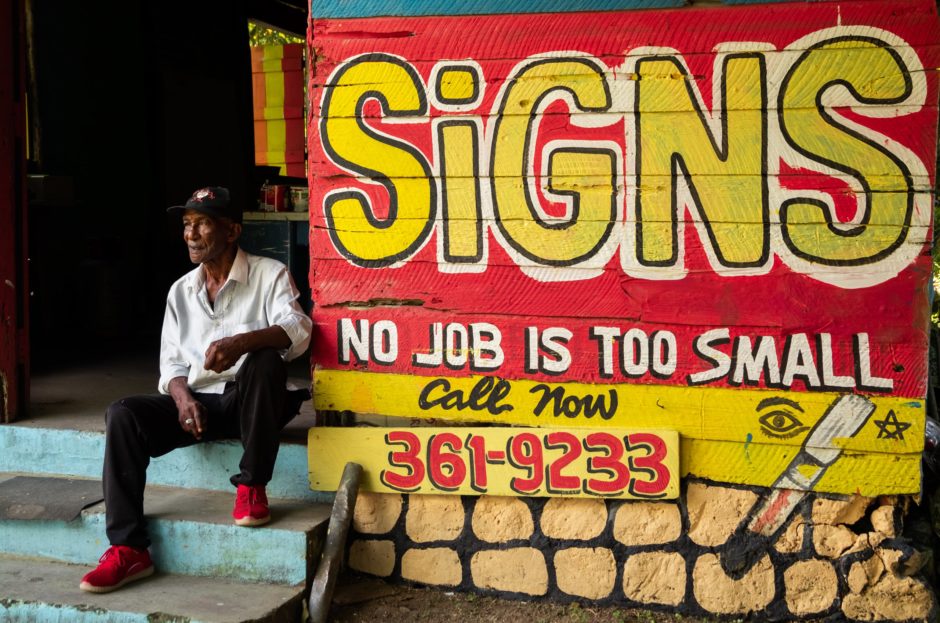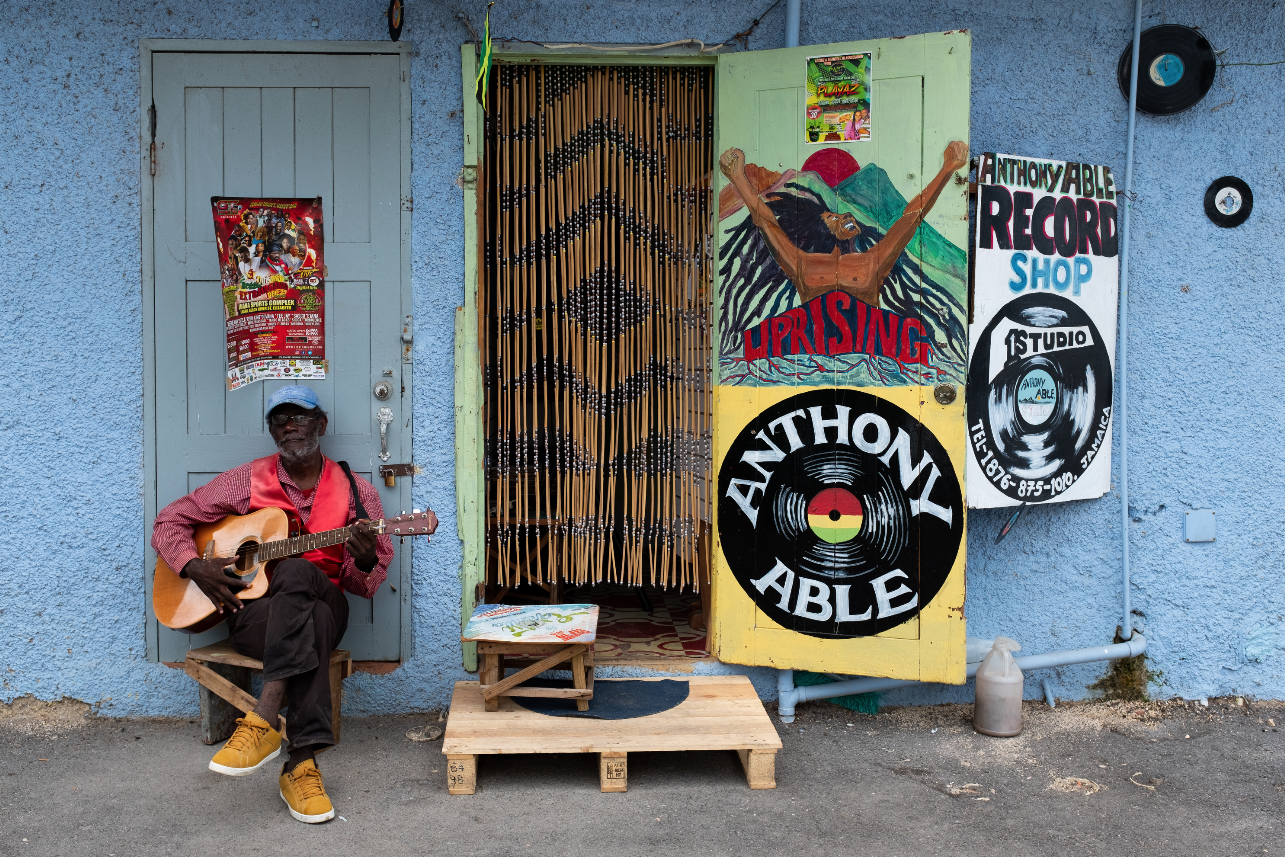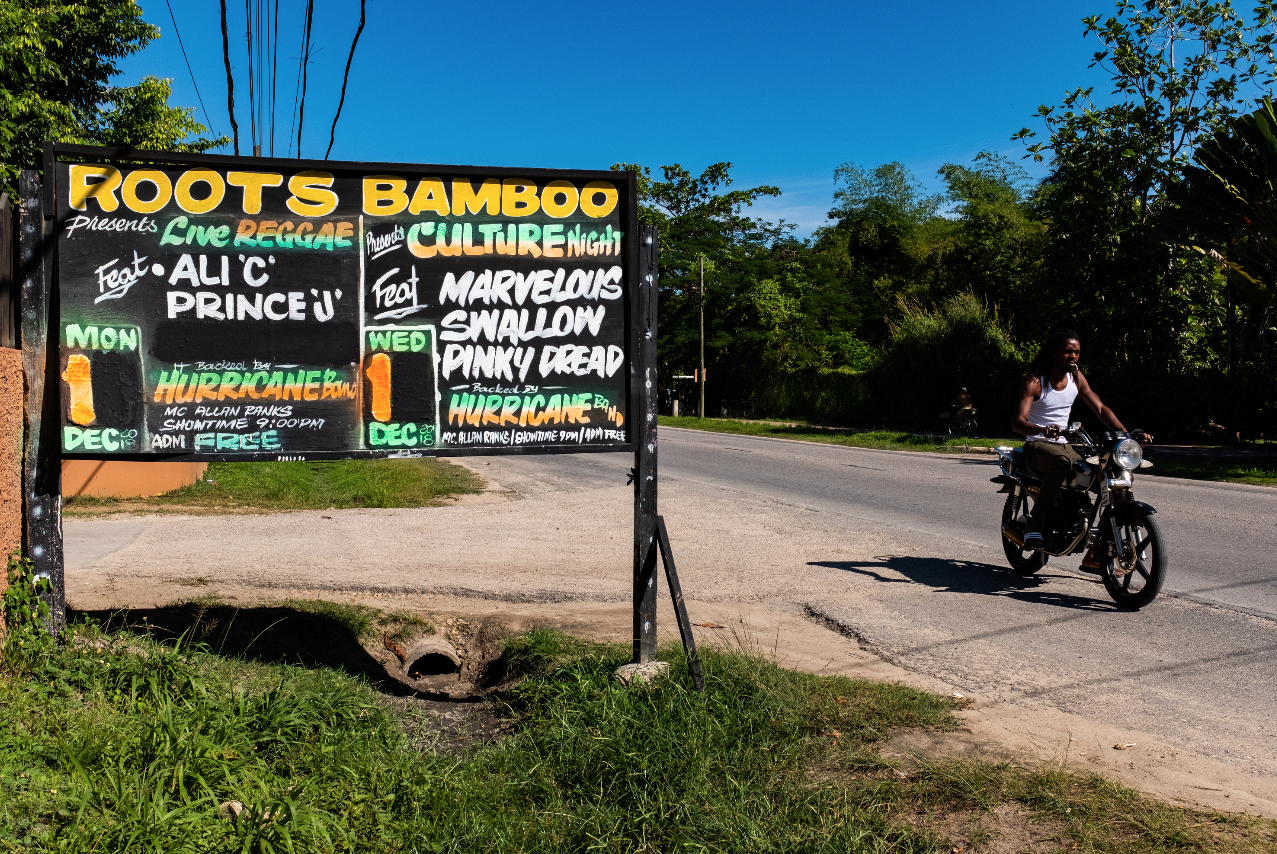TRACEY THORNE: SIGN PAINTING IN JAMAICA. BIG TINGS GWAAN
Big tings a gwaan down di street: An exclusive interview with Tracey Thorne on her new and insightful Jamaican documentary photography.
With an overall focus on visual language and a range of themes including commercial hand-painted advertisements, Jamaican music, street art, faded graffiti and local painters, the exhibition is sure to be full of culture. Fused spoke to Tracey about the project journey, her view on the works and how it relates to the UK art scene today:
What drew you back to Jamaica, and the parishes in particular, to document?
My first solo trip in 2017 to Jamaica, after traveling there many times over the years, really sparked ideas for this project. My love of reggae music initially drew me back to the island but this trip was different… I decided to go beyond the typical tourist destinations and experience ‘the real Jamaica’. At this time back in England, I was doing a project to document hand-painted old advertising signs on brick walls known as ghost signs.
Here I am in Jamaica, traveling in a car up Maxfield Avenue in downtown Kingston when we drove past a huge black and white ghost sign (for the old Channel One recording studios). I pretty much screamed with delight and we looped back round so I could photograph it. Channel One studios played a significant role in the development of reggae music and I was intrigued about the signs on the old studio which closed in the 1990s. It was clear that someone has been maintaining the sign as the rest of the building is derelict.
It was in those few days I started to think about the visual language of Jamaica and was interested in the painter’s perspectives. I had one more trip to Jamaica in early 2018 where I took more photographs, forming the basis of the project exploring hand-painted streets focusing on sign-writing, street art and graffiti. No one had explored Jamaica’s style of sign-writing. I was successful in securing a grant from Arts Council England which made it possible to explore and capture this art form.
On my return to Jamaica in December 2018, I journeyed through five parishes in search of sign-painters and photographed the omnipresent of hand-painted murals that appear all over Jamaica. Graffiti daubed across the walls is present in most urban areas but very different to the New York style of graffiti that we are more familiar with in Britain.
How was your experience traveling solo around the island, did you feel welcomed by the painters themselves?
Despite the negative press that Jamaica gets it’s actually a safe place to travel solo – once you get out of those tourist spots you will find a beautiful and very welcoming country. One evening I was out walking and a local cycled past me shouting ‘Welcome to Jamaica’. People frequently walk past saying thank you for visiting… I have never experienced this in any other country.
The violence is mainly limited to gangs and police with several state of emergencies in place. I spent time in several neighbourhoods in Kingston and as long as you’re with local people it’s safe. In fact, some of the best photographs I took are in Trenchtown and Denham Town where I got to spend several days with one of West Kingston’s main sign and mural painters Michael Robinson.
Unlike sign-painters in Britain, most aren’t on social media so before I went I had only set up two interviews with Bug Art in Westmorland and a street artist in Kingston called Michael McCarthey.
Jamaican painters usually sign their work and leave their telephone numbers, working in my favour. The reception I received was truly humbling. In total I interviewed around fourteen painters and they were very generous with their time. We walked the streets together, I visited their studios and got to watch many of them painting.
We noted how you witnessed the art in practice on the streets of Jamaica. Did you see how the community reacted or interacted with this?
Nearly all of my ten days in Kingston was spent with sign and mural painter Michael Robinson. One day, we went to a beautiful small community in the hills above the city called Maryland. He was asked (in Tivoli Gardens, Kingston) by a member of the community to re-paint a mural on the side of a housing block, to paint the Prime Minister Andrew Holness and two other political figures. These political murals are interesting as they are unofficial and used by the community along with graffiti to mark an areas political allegiances.
It took Michael two days to paint the mural in blistering heat and as it went up people would stand under it watching, commenting on the likeness and expressing approval. This mural went up in a Jamaica Labour Party (JLP) area so was received positively and that across Kingston anti-JLP graffiti appears or the slogan for the opposing party is written PLP. As I sat there watching, I couldn’t help but reflect on the complex political situation back in Britain with Brexit looming and the clearly contrasting sense of lack of national pride in our political leadership.
In the small community of Maryland, I witnessed strong community bonds and the important role that the sign-painter plays in supporting the local economy by painting commercial signs and helping them to create a place with a strong identity. Michael, at the request of the community, has painted various murals celebrating national heroes of Jamaica. One of these appears in the exhibition of the I Threes the female trio who played with Bob Marley and the Wailers.
Can you tell us a bit more about the freedom and power reflected in the art? Was there a sense of pride related to this?
Dancehall signs and murals are an important part of Jamaican popular culture which is why the exhibition uses the phrase ‘big tings a gwaan down di street’ from an essay by Jamaican author Marlon James. The street walls of Jamaica also provide a rich canvas and expression of the Jamaican story where history, nationalism and popular culture meet. I have traveled to many countries and never seen culture so vividly painted on streets; its national heroes, the nation’s flag/colours and importantly, its music.
Jamaican regulation pretty much prohibits the painting of signs and murals on walls so the Dancehall sign nailed to a lamppost and most of the hand-painted work found are illegal. Their existence and dominance in the visual landscape across the island, to some extent, disrupts the dominant culture and societal norms. We can already start to see, in areas like New Kingston, where signs are disappearing, that new developments often lead to uniformed streets hence a lack of cultural identity. This issue brings me back to my own city in Birmingham and the erosion of our public spaces, as our city is once again being re-made.
From your experience, what do you think it is about music that impacts Jamaican visual language so much? Why did you decide to document music as a big theme in the project?
I knew music was going to be a key theme as reggae continues to have a huge impact on lives globally, bringing people together. But equally it’s an integral part of life in Jamaica, it’s the heartbeat. You hear it everywhere you go. So, the music related signs are as important as the sleeve artwork was to vinyl.
I was keen to meet Nurse, one of the most well-known Dancehall sign painters, based in Negril. They’re usually painted on wood with a very distinct-to-Jamaica layout and lettering. Several Dancehall signs are in the exhibition and will help the audience learn about this style of painting.
An unexpected aspect of the works captures an important point in Jamaica’s musical history with the return of Buju Banton, following his imprisonment in the US. We both arrived in Jamaica on the same day and Buju’s music could be heard from pretty much every street. The exhibition captures the transition from Buju’s imprisonment to his freedom and much-anticipated concert Long Walk to Freedom.
Do you think your past interest in UK urban spaces and culture, particularly having lived in Birmingham, inspired this aspect of the project?
Definitely. About five years ago, in Birmingham, I parked on a street I’ve visited thousands of times and noticed a hand-painted old advert which I later found is more popularly known as a ghost sign. It was as if in that moment someone handed me a special pair of lenses where I could suddenly see the streets differently with a different reason to walk them. I was interested in how many hand-painted signs had disappeared in Birmingham and where they survive; the stories that can be revealed, alternative ways to think about these buildings and places.
I am concerned with the way public spaces in Birmingham and our visual landscapes have changed in the last two decades and feel this leads more and more to a loss of identity impacting on the way we feel about these spaces. The only part of the city that has a unique visual landscape is Digbeth and that’s because its walls are covered with graffiti and street art.
Birmingham has a strong Jamaican community and celebrating Jamaican culture has always been an important part of life here so this project felt important using photography as a tool to connect communities. My photography and the exhibition has really been influenced by the incredible work of Birmingham based documentary photographer Vanley Burke who has documented the lives of Caribbean communities here in the city for decades. I am grateful for Vanley’s support and humbled to have had the opportunity to work with him.
Are there any aspects of the UK art scene and visual language that were similar to Jamaica’s?
Despite the important reggae scene, the Jamaican style of hand-painted signs and murals hasn’t really made it across waters. Sign-painters I met in Jamaica say you can’t have a Dancehall party without a sign but we do – Dancehall promoters’ favour digitally produced promotional materials.
The St Pauls area in Bristol is one of the only communities that I have really seen where a larger concentration of hand-painted work representative of Jamaican street culture exists. Last year the community had a large mural painted to commentate 70 years of Windrush and a lot of other Jamaican street art appears on surrounding streets, including a large mural painting of a Jamaican flag with the caption ‘Captain Jamaica Gwan BS51’ painted by BS51 Leon.
In London, the large mural of Bob Marley painted by Dan Grimshaw in Brockley London also shows the strength of connecting communities and celebration of Jamaican culture achieved through hand-painted art forms.
Are there any works that you’re most excited about?
I am excited for people to see some original Dancehall signs painted by Nurse and Bug Art most. People can also enjoy learning about the painters and hearing their words by watching some of the short video stories. I think the words of Bug Art and Michael McCarthy reflect the younger generations love of painting and I personally found them very inspiring to meet and see such talent.
The exhibition starts with an enormous print of a photograph of a Bob Marley mural painted by Michael Robinson in Trenchtown. I wanted to try and recreate the street and help audiences who haven’t visited get a sense of the scale of art found on the streets. I hope there is something for everyone and that people can find something in the work that can connect them to Jamaica.
You can listen to Tracey’s exhibition Spotify play list here.
Laura Wilcox









